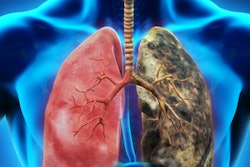
Almost half of global cancer deaths are due to risk factors, with smoking, alcohol use, and high body mass index (BMI) as the greatest contributors, according to research published August 18 in the Lancet.
Researchers at the University of Washington in Seattle analyzed data from the Global Burden of Diseases, Injuries, and Risk Factors (GBD) 2019 study to investigate how 34 behavioral, metabolic, environmental, and occupational risk factors contributed to deaths and ill health due to 23 cancer types.
They found that risk factors accounted for 4.45 million cancer deaths globally (44.4% of all cancer deaths) for both sexes combined, with smoking, alcohol use, and high BMI as the leading causes, according to senior author Dr. Christopher Murray, director of the university's Institute for Health Metrics and Evaluation (IHME), in a news release.
Despite being the second leading cause of death worldwide after cardiovascular disease, to date most studies of cancer burden have analyzed single risk factors globally or multiple risk factors in select countries. The new study aimed to estimate how a comprehensive list of risk factors contribute to cancer deaths and ill health globally, regionally and nationally, across age groups, for both sexes, and over time.
Murray and colleagues estimated cancer burden based on mortality and disability-adjusted life-years (DALYs), a measure of years of life lost to death and years lived with disability. They also studied changes in cancer burden between 2010 and 2019 due to risk factors.
According to the results, risk factors accounted for 105 million cancer DALYs globally for both sexes in 2019. Behavioral risk factors (such as tobacco use, alcohol use, unsafe sex, and dietary risks) were responsible for the vast majority of cancer burden globally, accounting for 3.7 million deaths and 87.8 million DALYs in 2019.
In addition, the researchers found the following:
- Half of all male cancer deaths in 2019 (50.6%, 2.88 million) were due to estimated risk factors, compared with over one-third of all female cancer deaths (36.3%, 1.58 million).
- Males had more years lost to death and disability due to environmental and occupational risks and behavioral risks compared with females.
- Global cancer deaths due to risk factors increased by an estimated 20.4% from 2010 to 2019 and differed considerably based on countries' level of development.
The five regions with the greatest cancer death rates due to risk factors were as shown in the table below.
| Cancer death rates due to risk factors by region | |
| Region | Deaths per 100,000 population |
| Central Europe | 82 |
| East Asia | 69.8 |
| North America | 66 |
| Southern Latin America | 64.2 |
| Western Europe | 63.8 |
The authors noted limits of the study, namely that due to a lack of data, there is greater uncertainty regarding estimates for lower sociodemographic index countries compared with higher sociodemographic index countries.
In an accompanying commentary, Prof. Diana Sarfati and Dr. Jason Gurney of the University of Otago in New Zealand, noted that the primary prevention of cancer through eradication or mitigation of modifiable risk factors offers the best hope of reducing future burden and that the link between cancer risk and poverty is no accident.
Action should include specific policies focused on reducing exposure to cancer-causing risk factors, such as tobacco and alcohol, and access to vaccinations that prevent cancer-causing infections, including hepatitis B and HPV, Sarfati and Gurney concluded.




















